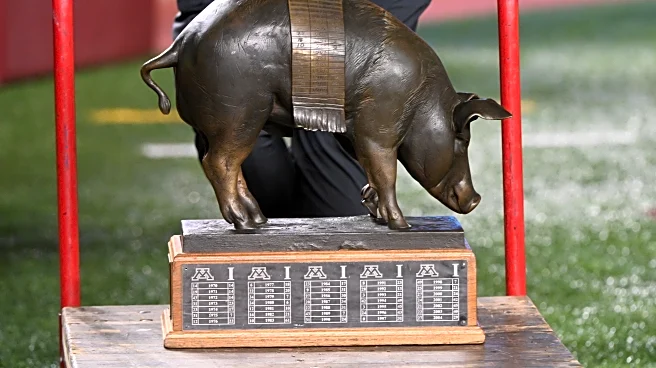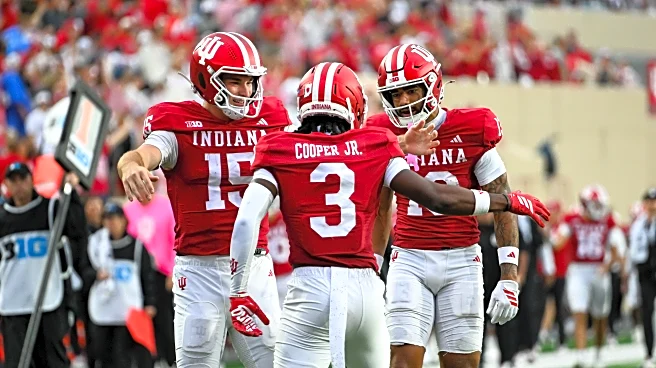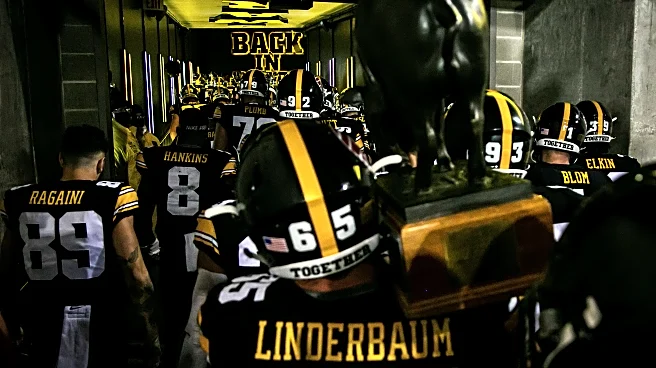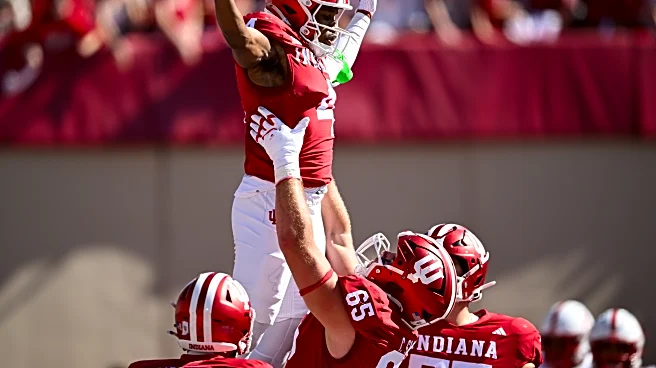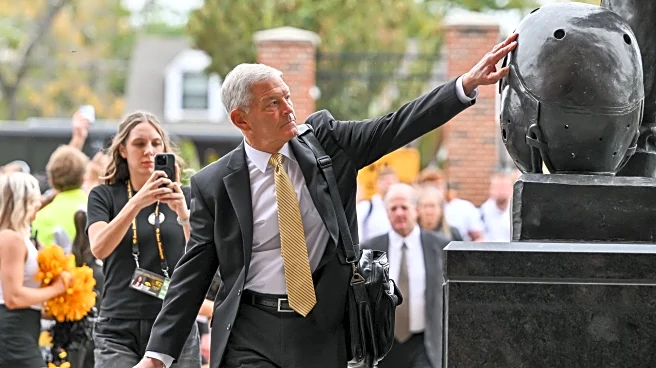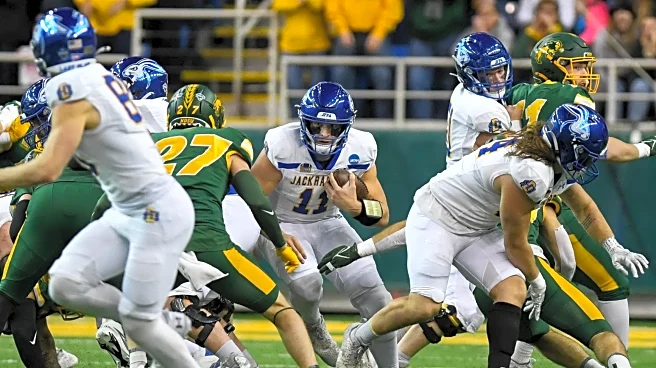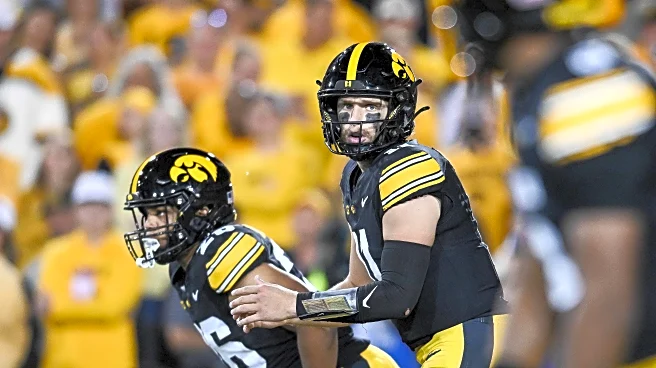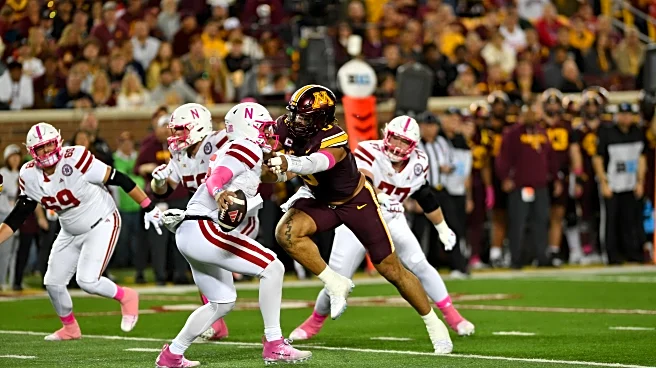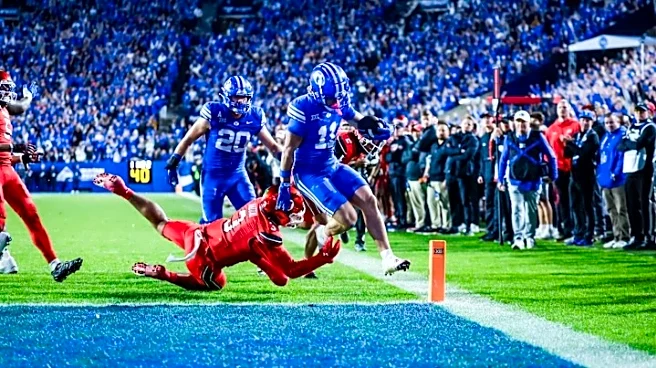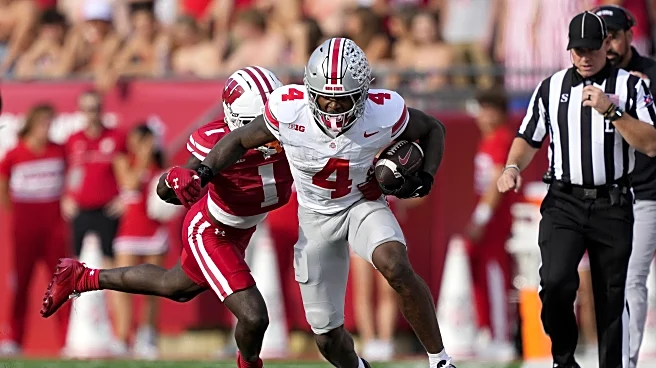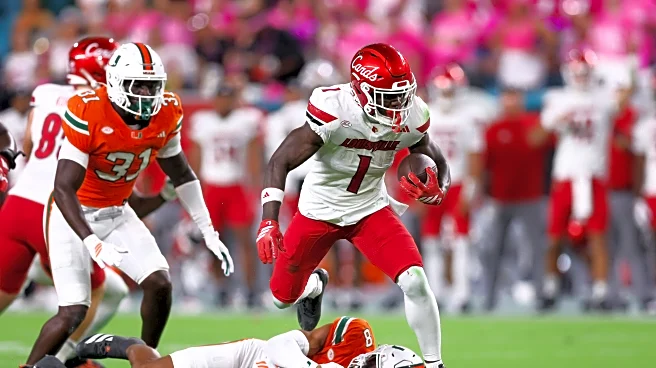Can someone please explain to me why Minnesota got a vote in the AP Top 25 this week and Iowa didn’t? I mean, sure, the Gophers knocked off a ranked Huskers squad (that looked every bit like the second-half
Nebraska teams we’ve come to expect), but if someone out there honestly believes that Nebraska is a better team than Penn State they’re out of their mind (Husker fans excluded, in that we all know what they think).
Sure, Penn State fired their head coach and lost their starting QB, but Ethan Grunkemeyer played about as well, if not better than, you would expect a freshman making his first collegiate start to play. Kaytron Allen did Kaytron Allen things, and Iowa’s coaching staff took some uncharacteristic gambles (like 66-yard FG attempts and passing twice on 2pt conversion attempts) that definitely made Iowa’s victory closer than it should have been.
Minnesota, meanwhile, beat a middling Nebraska team that has decided that it no longer needs to defend against the run. If records are the only thing being considered, then sure, but given that Iowa was in a position to beat the #2 team in the country when no other team has come within 10 points of them (and only a top 10 Oregon team has even hung with the Hoosiers into the 4th quarter), there is no objective world where Minnesota should be ranked if Iowa is not.
So I guess the Floyd of Rosedale game will be the dividing line here. If the Golden Flecks can come into Kinnick and do what only Indiana has been able to do so far this season, that vote might be justified, but if they can’t, well, this fan thinks Iowa should start getting a little more recognition for what they’ve shown on the field this year.
History
Minnesota leads the all-time series 63-53-2, but Iowa took last year’s meeting and the Gophers haven’t won consecutive games at Kinnick Stadium since 1981 — back when I was still in diapers. The Golden Flecks are coming off an upset win over the Bugeaters, but that doesn’t change the fact that PJ is 1-6 all time against Iowa, or that this is a team that needed a pick-six late in the 4th quarter (their 3rd INT of the day) to eek out a win over Purdue a few weeks back. That being said, this Gopher team definitely has some pieces that, when put together correctly, can resemble a good team.
Let’s see what the numbers have to say.
Offense

Iowa – 324.1 ypg (131.4 passing, 192.7 rushing), 29.9 ppg
Minnesota – 340.6 ypg (217.7 passing, 122.9 rushing), 26.9 ppg
The numbers tell an interesting story about two teams built very differently. Iowa’s offense under Tim Lester continues to show marked improvement, hitting nearly 30 points per game, a sentence I never thought I’d type during Kirk’s tenure. The Hawkeyes are doing it the old-fashioned way — pounding the rock for almost 200 yards per game on the ground while keeping things simple through the air. Also, the Gophers are giving up more than 175 ypg on the ground so far in B18 play, including allowing Purdue, that is not a typo, to run for more than 250 yards.
Mark Gronowski may have had his signature game (thus far) against PSU. Sure, he didn’t wow anyone through the air but he is proving that he makes winning decisions. I’m still convinced that his injury was the sole factor in the Indiana loss. Kamari Moulton has returned form his injury and played exceptionally well giving Iowa a solid one-two punch in the ground game. Now if our receivers could just catch a ball…
Minnesota, on the other hand, has a pretty decent pocket passer in Drake Lindsey who has thrown for nearly 1,500 yards through seven games, and the Gophers are far more willing to attack through the air. Darius Taylor has been serviceable when healthy, but Minnesota’s rushing attack has been inconsistent this season, averaging just 122.9 yards per game on the ground — 50+ yards below their season average under PJ. Not to mention that the last time they faced a defense of Iowa’s caliber (currently ranked #8 in total defense) was in Columbus, and that did not go well.
ADVANTAGE: Iowa. The Hawkeyes’ ability to control the clock and move the chains on the ground should play well in late October at Kinnick Stadium, but Minnesota’s passing attack has more explosive potential.
Defense

Iowa – 249.4 ypg allowed (131.4 passing, 92.4 rushing), 14.6 ppg allowed
Minnesota – 340.6 ypg allowed (197.0 passing, 97.7 rushing), 19.0 ppg allowed
Phil Parker’s defense isn’t quite at the historically dominant levels we saw in 2021-2023, but they’re more than getting the job done. Holding opponents to 14.6 points per game in today’s offensive-minded college football is impressive, even if it’s not the sub-13 ppg numbers we’ve grown accustomed to. The pass defense has been stout, allowing just over 131 yards per game through the air.
The secondary has definitely shown improvement over the last few weeks with Xavier Nwankpa, Koen Entringer, TJ Hall, and Zach Lutmer starting to gel. The LB corps isn’t the same quality as the last few seasons, but Jayden Montgomery and Karson Sharar have made the plays necessary to keep opponents honest. That being said, tackling continued to be an issue against Penn State, especially in the run game. I lost count of the number of times we had Kaytron Allen dead to rights at the line, only to see him “fall forward” for 4-5 yards.
Minnesota’s defense has had its moments but has been more vulnerable than in recent years. The Gophers gave up 42 points to Ohio State and have allowed opponents to move the ball more freely than Fleck would like. That said, they’re still a sound unit that doesn’t beat itself, and their secondary has a pick-six this season, something Iowa is still searching for (even if we’ve come very close twice in the last two weeks).
ADVANTAGE: Iowa. The Hawkeyes’ ability to limit explosive plays and force opponents into long, grinding drives plays perfectly into their general game plan. Minnesota will need to be patient on offense and avoid the third-and-long situations where Iowa’s pass rush can tee off.
Special Teams

Iowa – 45.1 punt avg, 14/19 FG, 27.8 ypkr, 27.5 yppr
Minnesota – 44.8 punt avg, 9/12 FG, 18.2 ypkr, 6.5 yppr
Special Teams have been a little less than consistent for the Hawks in 2025. I’m not going to put the kick-six from last Saturday on Drew (even Kirk admitted that mistake immediately, and that was a 1 in a million bounce off the block), but he’s still not as automatic as we’d all like him to be. Rhys Dakin showed some of the potential we’ve been expecting against PSU, even in limited use (when was the last time we could say that an Iowa punter saw “limited use” in a B18 game?), averaging 57.5 ypp. That hidden yardage could make a huge difference against a team like Minnesota. Kaden Wetjen is always a threat, which is evidenced by opponents going out of their way to neutralize him in the return game, even if it means giving up some field position.
Minnesota’s special teams are solid but not spectacular. Brady Denaburg has been reliable on field goals (75%), and Tom Weston handles punting duties competently, but the Gophers don’t have the game-breaking return ability that Wetjen brings to Iowa.
ADVANTAGE: Iowa. The field position battle could be crucial in what figures to be a defensive struggle, and the Hawkeyes hold a clear edge in all three phases of special teams.
Numbers to Watch
1 – Drake Lindsey is the straw that stirs the drink for Minnesota’s offense. The transfer from Baylor has completed 129 of 208 passes for over 1,400 yards. He’s mobile enough to extend plays and willing to push the ball downfield, which could test Iowa’s secondary.
1 – Xavier Nwankpa may have played his single best game in an Iowa uniform Saturday night. 10 tackles (7 solo), a forced fumble, and his first INT since the 2023 win over Utah State. Sure, the fumble bounced right back to Penn State (which seems to be happening a lot this year for the Hawks), but he almost got that pick-six, he’s been delivering some serious hits and is on pace to obliterate his previous high-water marks for tackles.
11 – Mark Gronowski’s brings the calm, experienced, presence this offense desperately needed. His knee seemed to be pretty good against Penn State and one has to expect he’ll be inching back towards 100% by next Saturday. He still needs to find some consistency throwing the ball, but he’s a weapon in the red zone unlike any Iowa QB we’ve seen in a while.
3 – Darius Taylor’s wears number 3 and has also posted 3 100-yard rushing games this season. When healthy, Taylor is one of the Big Ten’s better backs. Iowa’s run defense will need to contain him early to force Minnesota into obvious passing situations.
24 – Koi Perich has been a revelation for the Gophers’ defense, making plays all over the field. His pick-six against Purdue showed the kind of game-changing ability that can swing a tight contest.
28 – Kamari Moulton has been a shoestring tackle away from breaking a big run multiple times since returning from injury. Take away a poor play call against PSU and he would have logged his first 100 yard rushing performance of the season. Either way he’s still notching 5.4 ypc and I won’t be surprised if he breaks one against the Gophers (it’s got to happen eventually).
Lines
Point spread (at time of writing): Iowa -8.5
Over/Under: 38.5
The line reflects what most expect: a defensive battle at Kinnick Stadium with Iowa holding home-field advantage. The total of 38.5 (implied score of Iowa 23.5, Minnesota 15) seems about right for two teams that prefer to grind it out and play field position.
Iowa’s 5-2 record belies the fact that this team is a handful of plays away from being 7-0 with wins over two teams that were ranked when they played them. Minnesota’s 5-2 mark features a brutal loss to Ohio State, a concerning defeat at the hands of the Cal Bears, and a really close call against a Purdue team that turned it over to Minny 4 times. Both teams are capable of winning this game, but Iowa has played much tougher opponents much closer, so I admit to feeling fairly confident that the Hawks will come out on top.
As always, GO HAWKS!!!
